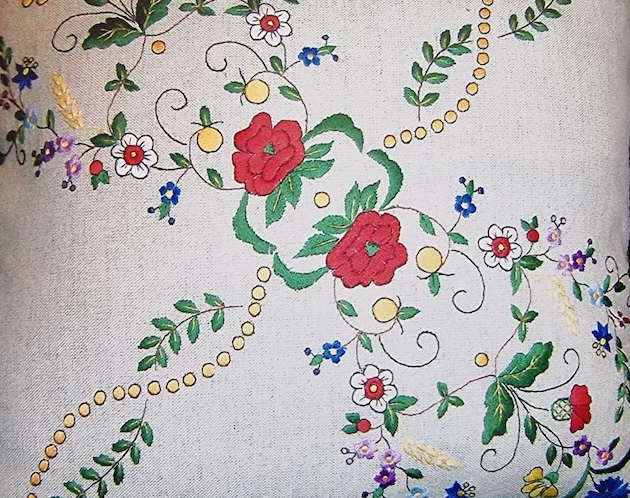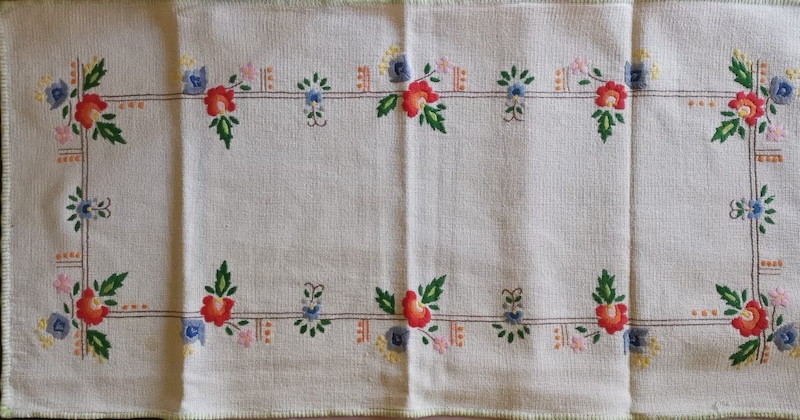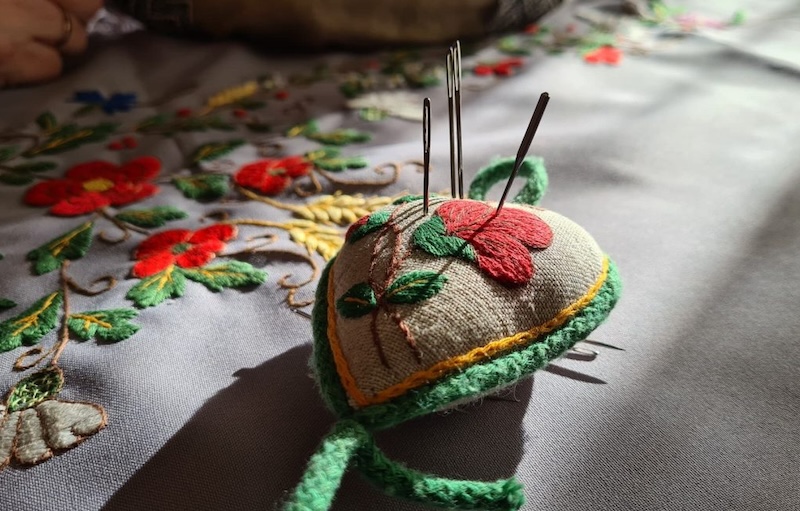
Kociewie Embroidery
Kociewie is known for its traditional embroidery patterns featuring flower, wheat, and poppy seed patterns (with some similarity to Kashubian embroidery, but still has its own “look”).
However, at one point, this design was almost completely lost. The rapidly developing textile industry and the ability to obtain cheaper factory-made fabrics became more prominent in the marketplace.
Also, the nearby Kashubian embroidery had a stronger ethnic presence, which further diminished the market for Kociewie embroidery. Some aspects of the Kociewie design and culture faded away.
Examples of Kociewie embroidery patterns:



In the 1970s, two women, independent of each other, started to research historic embroidery patterns with the intent to bring back Kociewie embroidery. They were Małgorzata Garnyszowa from Pączewo, and Maria Wespowa from Morzeszczyn.
Garnyszowa and Wespowa both started by looking at paintings and colors used on folk furniture, mostly dowry chests and chests of drawers. They gathered old patterns seen in flags, family photographs, wall-paintings, and church clothing/banners. In addition, they talked with elder Kociewie women.
These two Kociewie embroiderers used flower patterns with tulips, daisies, cornflowers, berries, leaves, buds, and stalks. Both had similarities in elements of their work, but their patterns had some differences.
Kociewie embroidery lacks the black and the three varying shades of blue color, which are popular in Kashubia.
The colors the two women used were different from each other:
- Maria Wespowa defined 7 basic colors: white, yellow, red, blue, green, lily, and brown.
- Małgorzata Garnyszowa used 13 basic colours: white, yellow, orange, light brown, dark brown, red, maroon, pink, lily, violet, blue, light blue, and green. She also used only gray linen.
- The basic stitch is flat or stem stitch.
In the 1980s the Kashubian-Pomeranian Association published a document on Kociewie embroidery. Today the patterns of Kociewie embroidery are featured at folk-art fairs – patterns often depict spikes of grain among colorful wild flowers on display right next to Kashubian designs.
Websites about Kociewie Embroidery
https://pomorskie.travel/en/articles/haft-kociewski
https://www.blog.cerames.eu/patterns-of-the-kociewie-region/